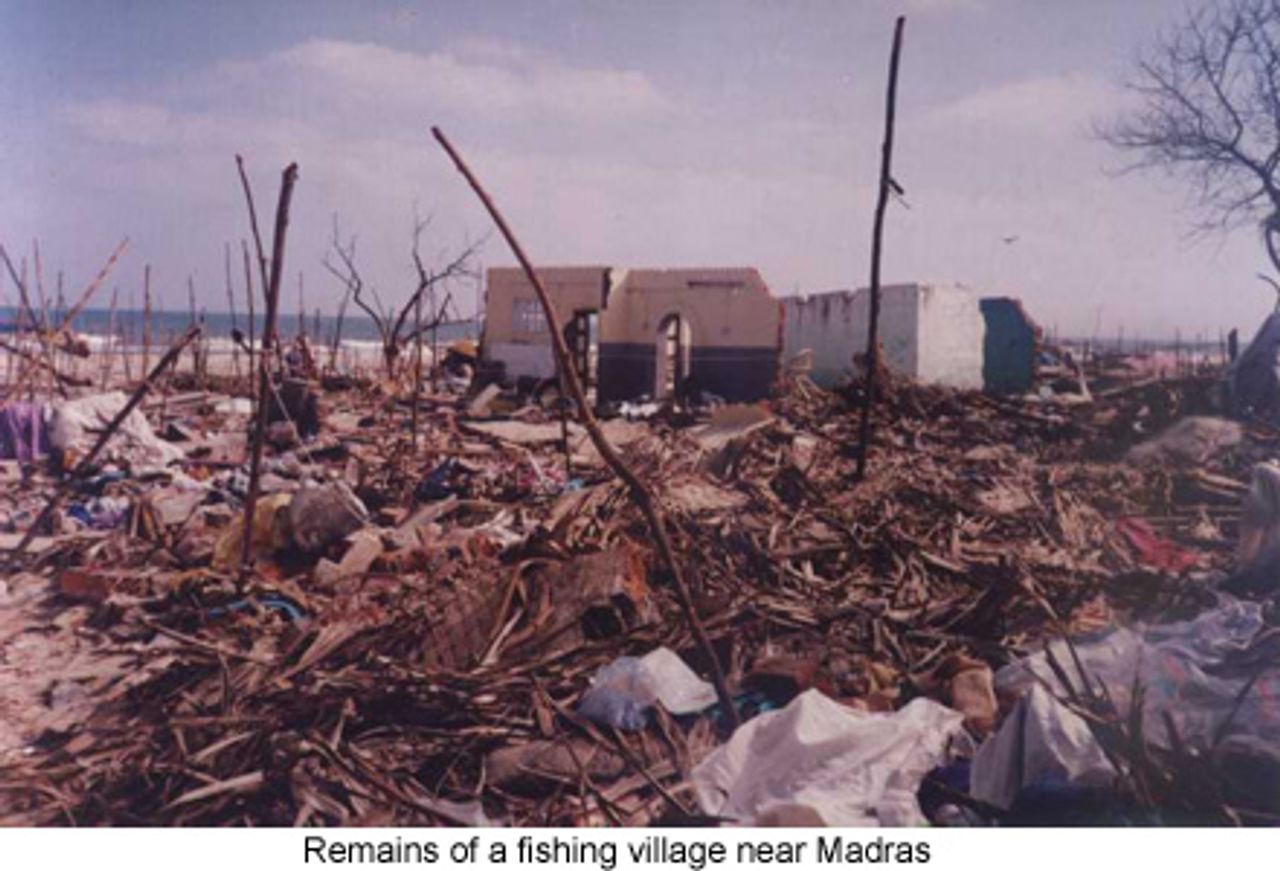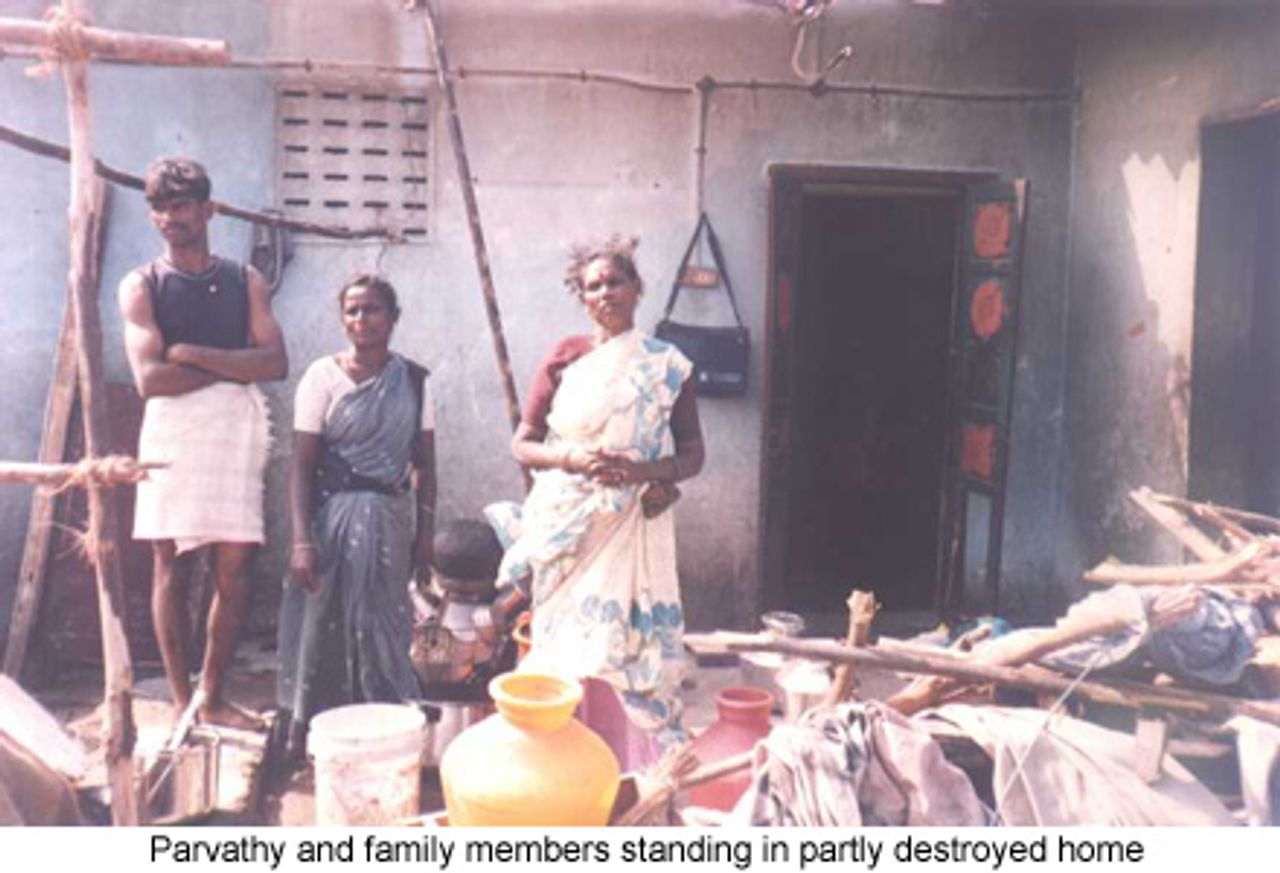The tsunami that killed over 140,000 people in southern Asia has taken at least 14,000 lives in India. Nine days after the catastrophe, Indian governments at the state and federal levels have yet to establish relief operations in a number of areas. This slow and inadequate response is now threatening thousands more lives as epidemics begin to emerge.
A total of 2,260km of India’s southern coastline were affected. The waves reached 10 metres in height and penetrated as far as three kilometres inland. Most of the low-lying Andaman and Nicobar islands were inundated.
Over the weekend, Indian authorities put the estimated death toll at 14,488 comprising 9,451 dead and more than 5,000 missing, feared dead. The actual figure, however, is likely to be far higher as emergency workers continue to retrieve corpses.
The southern state of Tamil Nadu was the worst affected with nearly 8,000 killed. The remote Andaman and Nicobar Islands situated in the Bay of Bengal account for more than 5,000. Those killed in other southern Indian states include Kerala 166, Andhra Pradesh 106 and the Union Territory of Pondicherry 574.
In the Andaman and Nicobar Islands, the scale of the disaster is unknown. Although the official death toll stands at just over 5,000, conservative estimates put the figure at 10,000. Almost 80 percent of the islands, which had a population of about 350,000, are yet to be surveyed.

The remote Indian territory, a popular tourist resort, was close to the epicentre of the initial earthquake and is still being affected by tremors.
Eight of the islands were badly hit and almost all the jetties in the territory wiped out. Electricity supplies have been destroyed and drinking water is now scarce because groundwater has turned saline. There are long queues for safe drinking water.
Residents on the islands are now in a state of shock with entire families sleeping in the open in fear of more earthquake and tsunami waves. “There is nothing to eat there. There is no water. In a couple of days, people will start dying of hunger,” explained Anup Ghatak, a contractor on Campbell Bay Island, as he was being evacuated.
Survivors have angrily denounced the civil administration for not providing any aid for three days and accused them of underplaying the extent of the disaster. The frustration boiled over last week when a crowd demanding food and water assaulted a government official in the Campbell Bay township.
“There is starvation. People haven’t had food or water for at least five days. There are carcasses. There will be an epidemic,” Manoranjan Bhakta, Andaman’s federal parliamentary MP, warned on Saturday. Indian authorities have yet to organise full-scale relief operations to the islands. The federal government has also barred international aid groups from many of the islands.
According to Union Cabinet secretary B.K. Chaturvedi, a team of 12 central government officers was due to reach the Andaman region last Sunday—seven days after the disaster. Arrangements, he claimed, had been made to deploy a large number of helicopters to ferry in relief materials. But it has taken almost a week to partially restore water transport to the island group—its essential lifeline to the outside world.
Tamil Nadu
On Saturday, officials estimated the death toll in Tamil Nadu at 7,793. Nagapattinam district is the worst affected area with 77 villages damaged and over 6,000 deaths, including 1,523 children.
Kanyakumari follows with 820 dead, Cuddalore 600, Kancheepuram 124, Villupuram 47, Thiruvallur 28, Thanjavur 22 and over 200 in Chennai city coastal districts. Other affected districts are Tiruvarur, Pudukottai, Tuticorin, Ramanathapuram and Tirunelveli.
Despite official talk of massive emergency operations, scores of decaying corpses are still being found and dug out of the wreckage every day.
In total, more than 480,000 people in 362 villages have been left homeless in Tamil Nadu. This includes, 176,000 in Nagapattinam, 61,000 in Cuddalore and 60,000 in Kancheepuram. An estimated 300,000 people are now in 402 relief camps throughout the state.
Thousands of families have been torn apart with the loss of children, wives, husbands, brothers and sisters. Hundreds of children have been orphaned. Poor fishing families, who are still in shock over the loss of loved ones and their fishing boats and equipment, have not yet been provided proper shelter, food, clothing and other basic facilities.
Parvathy, 30, a mother of seven children from a village on the Madras coastline, told the World Socialist Web Site: “My husband has a security job and I do domestic work for a living. Many of us were protected from the giant wave on Sunday because the men were at home and managed to save many children, women and elderly.
“It happened Sunday around 8.30 a.m. but by 1 p.m. nobody from the government had even visited the site! And after 6 p.m. it was our youth who stayed awake to look after us, not the police or any other rescue personnel from the government. We live in fear every day.”

Survivors told WSWS reporters that everyone, regardless of their differences, helped each other during the tsunami. They were also emphatic that the government should provide them with secure alternative accommodation, not far from the sea as they have to resume fishing. Currently men, women and children are exposed to the elements—the hot sun during the day and cold breezes late at night and in the early morning.
On January 1, fishing families from a Marina Beach foreshore estate in Chennai blocked the road to demand immediate relief measures from state authorities.
They told officials who visited the protest: “We lost mothers, fathers, children, friends and relatives and stand here as orphans. Our dwellings were destroyed by the massive waves and we have been sleeping on roads and open ground. The government must build houses for us—the homeless—where the old Marine Department functioned.”
A false tsunami warning last Thursday rekindled memories of the catastrophe. Tens of thousands of panic-stricken men, women and children in Tamil Nadu and Kerala fled coastal areas after India’s defence and home ministries issued an alert. Local residents were directed to move two kilometres inland to escape a possible tidal wave.
The alert, however, proved to be false, further increasing distrust and anger in the federal government, which failed to issue any warning in the face of more compelling evidence on December 26.
The Indian media ridiculed the “warnings”. The Indian Express headlining its story “Run survivor run: It’s not a quake, it’s not a wave, it’s the home ministry”. An article in the Times of India declared: “Government shoots mouth, triggers panic.” The Times pointed out that the so-called alert “threw millions into panic and disrupted urgent relief work.”
Having survived the tsunami, tens of thousands of displaced and starving villagers in Tamil Nadu’s other coastal districts are now confronted with another disaster—the spread of diarrhea and other serious diseases which could further increase the death toll.
There are serious shortages of medicine, disinfectant and other basic medical supplies. Initial reports indicate that more than 500 people are being treated for vomiting in camp hospitals set up by the state administration and relief agencies. The Indian press reported outbreaks of diarrhea in Eachankuppam, Akkaraipettai, Nagore, Aryanattukarai and other places.
A World Health Organisation spokesperson in New Delhi warned that the outbreak of “water-borne diseases” was high in the region and called for the immediate provision of safe drinking water and proper sanitation to the displaced.
In many areas the stench of rotting corpses hangs in the air. While mass burials have been organised, local authorities are simply overwhelmed by the task of retrieving and disposing of the hundreds of bodies that are still being discovered.
